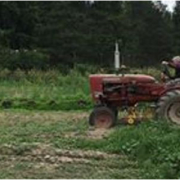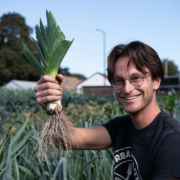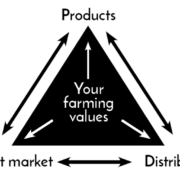The Sequel is Better: CFAP2 is Available Now
 Print This Post
Print This Post
By Jeff Schahczenski, NCAT Agricultural and Natural Resource Economist
Like many of our favorite movies, the sequel to the Coronavirus Farm Assistance Program (CFAP2) is an expansion and improvement of the original. The USDA Farm Service Agency (FSA) began taking applications for CFAP2 on September 21, 2020. The program will end on December 11, 2020. About $14 billion has been made available to fund this relief effort for U.S. agriculture producers impacted by COVID-19.
For Judy Owsowitz, owner and founder of Terrapin Farm in Whitefish, Montana, CFAP2 is welcome help for the significant losses she experienced this year due to the pandemic. “I chose to not do farmers markets this year out of concern for my crew and the public. Many of my restaurants are also struggling. CFAP 2 has simplified access to pandemic relief,” Judy noted.
With a new category of relief payments known as sales commodities, hundreds of specialty crops, aquaculture, nursery crops, and floriculture items are eligible. Relief payments for this wide category of goods are calculated based on the producer’s 2019 sales of these eligible commodities and a declining payment rate that is roughly 10% of the value of those sales is provided. So, a farm with a 2019 gross sales revenue of, say, $125,000 would receive a relief payment of slightly more than $12,500. As gross sales increases, the percentage of relief decreases slightly to a bit less than 10%.
A highly diverse farm like Terrapin Farm with over 500 varieties of unique vegetables, fruits, and herbs, can simply report total sales revenue from 2019 as the basis of relief payment without having to list each product. “I tried to access CFAP1 and it was just too burdensome to have to list each crop separately, particularly when the payment was so small for each crop,” said Judy. For CFAP2, a producer only has to document the total sales of eligible crops in 2019 and an online calculator provided by the FSA will calculate the total relief payment, as well as generate part of the application paperwork.
The larger diversity of crops and livestock products covered by CFAP2 is significant. In fact, the only items not eligible for relief under CFAP2 are:
- Hay, except alfalfa, and crops intended for grazing
- All equine, animals raised for breeding stock, companion or comfort animals, pets, and animals raised for hunting or game purposes
- Birdsfoot and trefoil, clover, cover crop, fallow, forage soybeans, forage sorghum, gardens (commercial and home), grass, kochia (prostrata),
lespedeza, milkweed, mixed forage, pelts (excluding mink), perennial peanuts, pollinators, sun hemp, vetch, and seed of ineligible crops
In addition to sales commodities, there are two additional eligible ways to access CFAP2 payments:
Price Trigger Commodities: Barley, corn, sorghum, soybeans, sunflowers, upland cotton, and all classes of wheat; broilers; eggs and milk; beef cattle, hogs and pigs; and lambs and sheep. Relief payment is based on 2020 planted acres, yield, marketing percentage, and a specified payment rate.
Flat-Rate Commodities: Alfalfa, amaranth grain, buckwheat, canola, Extra Long Staple (ELS) cotton, crambe (colewort), einkorn, emmer, flax, guar, hemp, indigo, industrial rice, kenaf, khorasan, millet, mustard, oats, peanuts, quinoa, rapeseed, rice, sweet rice, wild rice, rye, safflower, sesame, spelt, sugar beets, sugarcane, teff, and triticale. Relief payment is simply $15 per 2020 planted acre.
The addition of the flat-rate commodities is significant, as these were not included in the original CFAP. Many of these flat-rate commodities, particularly some of the ancient grains such as amaranth, einkorn, emmer, flax an khorasan, and spelt, are grown organically, providing important support for organic grain farmers.

Even the Terrapin Farm logo of a turtle munching on a famously sweet Terrapin Farm carrot appears a bit happier, as she struggles through these difficult times. “It’s great to see our federal government become responsive and to recognize how important the full diversity of our local and regional food system really is,” Judy said.
For more details, see the USDA website.
Finally, a payment calculator tool will be available soon that can help you assess whether the CFAP2 makes sense for your specific situation.
ATTRA specialists are on hand to walk you through what you need to know to receive a share of this government assistance package. Give us a call at 800-346-9140 or e-mail us at AskAnAg@ncat.org. We’re here for you!


 USDA photo by Lance Cheung
USDA photo by Lance Cheung USDA photo by Christophe Paul
USDA photo by Christophe Paul


 CanvaPro
CanvaPro


